
Barbell clean-and-jerks. Kettlebell lifts. Heavy medicine-ball throws. Rope climbing. Exercises that were popular in the late 1800s with the introduction of the first modern fitness facilities have experienced a resurgence thanks to the popularity of CrossFit® and other workout programs emphasizing high-intensity strength and power training. Traditionally used by strength coaches working with athletes who need to perform at the highest levels of competition, CrossFit conditioning programs feature high-intensity exercises and explosive lifts designed to push the human body to its limits. CrossFit operates as a franchise structure, with independent affiliates worldwide responsible for implementing a Workout of the Day (WOD). WODs are extremely high-intensity workouts emphasizing a variety of functional movements and technical, skill-based weightlifting exercises. One of the most popular workout trends in recent memory, in just over a decade CrossFit has grown from an obscure niche in the fitness industry to a full-blown phenomenon with competitions featured on national television as the “Sport of Fitness.”
Created in 2000 by former gymnastics coach Greg Glassman, CrossFit has tapped into an unprecedented consumer demand for results by using challenging strength and power exercises combined with bodyweight gymnastics and plyometric movements. In its definition of “World-Class Fitness” CrossFit advocates:
“Practice and train major lifts: deadlift, clean, squat, clean and jerk, and snatch. Similarly, master the basics of gymnastics: pull-ups, dips, rope climb, push-ups, sit-ups, presses to handstand, pirouettes, flips, splits and holds. Bike, run, swim, row, etc. hard and fast. Five or six days per week mix these elements in as many combinations and patterns as creativity will allow.”
One reason for CrossFit’s popularity is its use of timed workout formats, which enable participants to measure their individual success and compare results of their WOD to those of other CrossFitters around the world. Another reason for CrossFit’s success is that it is a form of small-group training; the WODs include a number of participants working with trainers (called coaches) who provide feedback and encouragement. The small-group aspect means that participants receive the benefits of working with an instructor, while also feeding off the energy of training in a group. As CrossFitDC owner and head coach Tom Brose says, “It’s no fun to go to a gym and do stuff on your own; our WODs feature people coming together for a common purpose, which builds a community.” Finally CrossFit has become popular because the high-intensity training techniques are effective and consumers are proving that they are willing to work hard and push themselves if they see results from their efforts.
CrossFit features a competition-style format, which provides an additional incentive for training hard with maximal intensity. In its Training Guide, CrossFit identifies the recording of WOD results and competitions as the engine that keeps participants engaged:
“It is our observation that men will die for points. Using whiteboards as scoreboards, keeping accurate scores and records, running a clock and precisely defining the rules and standards for performance, we not only motivate unprecedented output, but derive both relative and absolute metrics at every workouts; this data has important value well beyond motivation” (CrossFit, 2010).
The CrossFit philosophy is that “routine is the enemy” and WODs should be extremely intense, but short in duration. This approach encourages participants to train much harder than they would simply by going to a health club and hopping on a piece of cardio equipment or taking a traditional group fitness class.
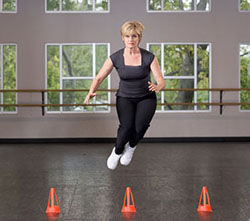
Other CrossFit-style Workouts
CrossFit’s unprecedented growth is particularly remarkable in light of the recent economic downturn, which caught many health clubs unprepared as they rushed to develop their own branded conditioning programs to retain members. To meet the demand from members who want the benefits of high-intensity training, health club companies both large and small have developed their own programming to offer challenging workouts and, in some cases, even competitions to give participants a specific training goal. Here is just a brief list of the companies that have introduced CrossFit-style workouts to their fitness programs:
- Millennium Partners Sports Club Management operates seven clubs under the Sport Club/LA and Reebok Sports Club/NY brand names and offers the Blitz program for its members.
- With more than 100 clubs nationwide, Lifetime Fitness developed its Alpha Training program as a small-group format designed to help members increase their strength and fitness levels.
- Town Sports International, the largest club operator on the east coast with more than 150 clubs, introduced UXF – the Ultimate Fitness Experience, which offers both classes and specialized training areas for members looking for an additional challenge.
- Equinox fitness launched the Equinox Training Camp to provide high-intensity workouts and to educate members on how to use nutrition and recovery strategies to maximize the effects of the training stimulus.
While there are numerous benefits to hard-charging CrossFit-style workouts, the downside of high-intensity programs is that they greatly increase a participant’s risk of injury. Even the most successful program in the world won’t work if a participant develops an injury that limits his or her ability to do any exercise at all. The challenge for personal trainers and fitness instructors, therefore, becomes how to help clients receive the benefits from high-intensity conditioning programs while minimizing the risk of injury. It is important to note that ANY form of exercise done incorrectly can cause injury; the purpose of this article is not to disparage high-intensity training, but rather to provide an overview of how it can be safely used to help clients achieve their goals.
High-intensity Training Produces Results
All exercise is a form of physical stress applied to the body. The SAID principle states that the type of physical demand placed on the body determines the type of physiological adaptation that can occur (Baechle and Earle, 2008). High-intensity, power-based exercises are very effective at developing lean muscle; however, they also place a lot of stress on the body and should only be used with proper instruction and in the appropriate volume. There are specific reasons why high-intensity training produces results and it’s important to understand the science so you can help clients maximize their results and avoid injury.
There are two basic muscle fiber classifications: type I (slow-twitch) and type II (fast twitch). The different fiber types are each activated by specific motor units controlled by the nervous system. Slow-twitch muscle fibers are also known as aerobic muscle fibers for their ability to create energy from oxygen, which allows them to sustain a minimal amount of force over an extended period of time. For this reason, most muscles responsible for producing and maintaining good posture are comprised of type I fibers and are often referred to as tonic stabilizers. Type I motor units have a low activation threshold and are the first recruited to provide strength for an activity; however, when they cannot produce the required amount of muscle force, type II motor units are stimulated to activate type II muscle fibers. The most common way to increase motor-unit activation is to lift heavier weights; an increased load placed on a muscle will cause a greater number of motor units to respond in an effort to engage more fibers to generate a muscular force to overcome the resistance.
Type II motor units and their attached muscle fibers have a higher activation threshold, meaning they are only stimulated when a large amount of force is required. Type II fibers are responsible for producing the strength to lift heavy weights or the power to move explosively. There are different classifications of type II muscle fibers: type IIb, which produce energy without the presence of oxygen (anaerobic), and type IIa, which, depending on the training stimulus, take on characteristics of either type I or type IIb fibers. In general, type II muscle fibers have a greater diameter (cross-width) than type I fibers and are responsible for the muscle size and definition that develop from a challenging exercise program. Recruiting and stimulating a type II muscle fiber requires creating enough overload to fatigue the involved muscle by the end of the set.
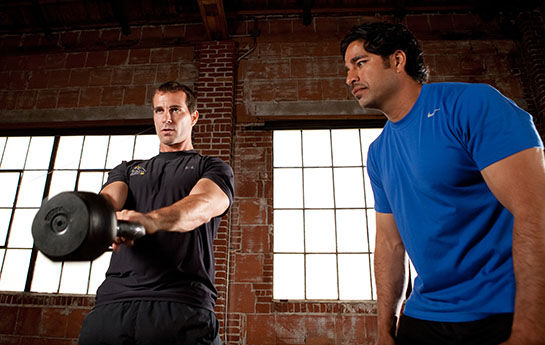
Explosive, high-velocity movements involve a rapid lengthening and shortening of the involved muscles. Increasing the speed of muscle lengthening and minimizing the transition time from the eccentric lengthening phase to the concentric shortening action will activate more muscle spindles, which, in turn, activate more muscle motor units. Dynamic, power-based movements are, by definition, explosive and use primarily type IIb muscle fibers because of the requirement for immediate energy for maximal levels of force production. This is the basic science behind why CrossFit and other high-intensity programs feature explosive jumps, medicine-ball throws, kettlebell swings and barbell lifts like the snatch or clean-and-jerk; simply put, they are extremely effective at stimulating the muscle fibers most responsible for increasing size and definition.
A body’s metabolism determines the efficiency at which it converts the nutritional substrates fat, carbohydrates and, in some instances, protein into energy for muscle activity. Power training is not only an effective way to activate the type II motor units, it is also an extremely efficient method of increasing the metabolic, energy-burning effect from a workout. Power is defined as the Time period to perform Work: P = W/T; work is the product of Force x Distance (W = FD) where Force = Mass x Acceleration (F = MA). Improving power output (work-rate) and increasing the metabolic demand from a workout requires changing one of three inputs: using a greater mass (heavier weight), increasing the rate of acceleration of the weights lifted (throws and explosive movements) or increasing the distance traveled during a training session. This is the rationale behind the CrossFit protocol for short duration, high-intensity workouts. As researcher Brad Schoenfeld points out in his exhaustive review of the research literature on training for hypertrophy, “A large body of evidence shows that [metabolic stress] can have a significant hypertrophic effect” (Schoenfeld, 2010).
High-intensity training influences the body by both the mechanical and metabolic stimulus to the type II muscle fibers. Using heavy resistance or explosive movements involves more type II motor units, which activate the type II fibers responsible for hypertrophy (muscle fiber size) and muscular definition. Additionally, high-intensity resistance training with heavier loads or explosive movements stimulates the endocrine system to produce the anabolic hormones testosterone (T), growth hormone (GH) and insulin-like growth factor (IGF-1), all of which assist with muscle protein synthesis, the repair process of muscle tissue after a training session. Research by Linnam and colleagues revealed “hormonal changes appear to be related to the amount of muscle mass activated and to the metabolic response caused by the exercise” (Linnam et al., 2005). Separately, in their research on sprint interval training, Meckel et al. found that to stimulate an anabolic response, “input should be sufficient to cause a sizable metabolic effect” (Meckel et al., 2011).
Staying Injury-free During High-intensity Exercise
A plethora of evidence exists in both peer-reviewed research and anecdotal experience that intense exercise produces the results many clients are looking for. However, the nature of high-intensity exercise does increase the risk of injury to a participant who does not possess the underlying fitness level or movement efficiency to successfully execute the requirements of a high-intensity WOD. Likewise, insufficient rest or recovery between high-intensity workouts can greatly increase the risk of a training injury. “Microtrauma, or overuse injury, results from repeated, abnormal stress applied to a tissue by continuous training or training with too little recovery time,” argues Beachle and Earle (2008).
To allow clients to experience the benefits of high-intensity exercise, while minimizing the risk of an overuse injury, it is important to know how to teach skill-based exercises like the squat, kettlebell swing or barbell snatch. Additionally, trainers should know how to take the time to properly progress a client to high-intensity training and implement a program with periods of lower-intensity exercise to allow for proper recovery and adaptation to the training stimulus.
A recent study on CrossFit demonstrates that high-intensity power training can be an effective exercise stimulus. “Data shows that [CrossFit] significantly improves VO2max and body composition in subjects of both genders across all levels of fitness” (Smith et al., 2013). It can, however, come with a cost: Of the original 54 participants only 43 completed the study, nine had to drop out citing overuse or injury as the reason for withdrawing. While not definitive, this study is a good indicator of the inherent risks associated with high-intensity exercise. As the study authors note, “This may call into question the risk-benefit ratio for such extreme training programs, as the relatively small aerobic-fitness and body-composition improvements observed among individuals who are already considered to be ‘above average’ and ‘well-above average’ may not be worth the risk of injury and lost training time” (Smith et al., 2013).
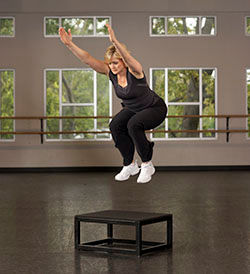 All exercise is movement, and movement is a skill that must be properly taught by a qualified instructor and correctly executed by a client to be the most effective. High-intensity exercise itself is not dangerous, but using it inappropriately or without the proper guidance is not advised. As CrossFit has developed and expanded over the years, smart studio operators and coaches have made teaching safe exercise technique a critical component of their businesses. For example, CrossFitDC coach Brose requires all new participants to take a two-week, six-session program to learn the foundational movements before being allowed to participate in a WOD. Brose enforces technique and proper progressions for all of his participants and always offers lower-intensity options that allow them to exercise hard but with an emphasis on safety.
All exercise is movement, and movement is a skill that must be properly taught by a qualified instructor and correctly executed by a client to be the most effective. High-intensity exercise itself is not dangerous, but using it inappropriately or without the proper guidance is not advised. As CrossFit has developed and expanded over the years, smart studio operators and coaches have made teaching safe exercise technique a critical component of their businesses. For example, CrossFitDC coach Brose requires all new participants to take a two-week, six-session program to learn the foundational movements before being allowed to participate in a WOD. Brose enforces technique and proper progressions for all of his participants and always offers lower-intensity options that allow them to exercise hard but with an emphasis on safety.
CrossFit Invictus in San Diego, Calif., takes a different approach to ensuring participant safety. Owner CJ Martin wants to make sure that all participants enjoy the benefits of high-intensity exercise by offering three levels of progression for each workout: Fitness, Performance and Competition. The Fitness level is for members who want to exercise to improve their health, lose weight and enhance muscular definition, and the WODs are modified with exercises that are not technically demanding, but still effective at producing results. The Performance level is for members who want a more challenging workout, while the Competitive level is reserved for participants who are actively training to compete in the CrossFit games.
To minimize the risk of injury, both Brose and Martin incorporate adequate time in a training session for a complete dynamic warm-up with movement preparation specific to the exercises of the WOD. Martin coaches a number of athletes who have qualified for and placed in the top 10 of national competitions. He helps his athletes achieve success by periodizing their workouts to allow for appropriate recovery and monitoring their daily levels of perceived exertion. Any time one of Martin’s athletes demonstrates that they are tired or “under-recovered,” he switches the workout to low-intensity mobility training or cancels that day’s training session entirely.
As mentioned, the original CrossFit exercise prescription calls for high-intensity strength training “five or six days a week.” However, as health club companies have developed their own high-intensity training programs, they have done so with an emphasis on teaching safety and promoting rest time to allow for optimal recovery. The LifeTime Fitness Alpha Training small-group program, for example, requires a movement assessment (what they call a “try-out”) prior to allowing a member to participate in the full program. If a member does not pass the assessment, they are required to take an Alpha Fundamentals class to improve their movement efficiency and exercise technique. The Alpha Training program is an ongoing periodized program and is limited to only six participants at a time, which allows the instructors to coach and ensure proper lifting technique. According to Jason Stella, the creator of Alpha Training, the program emphasizes developing the bio-motor abilities to enhance movement efficiency, recommends performing just one maximal intensity “personal-record-type” workout per week, and incorporates a one-week “off-loading” phase after every three- to four-week high-intensity phase.
The Equinox Training Camp (ETC) uses high-intensity training as an opportunity to interact with and create additional value for members through programming. ETC is a six- to 12-week program that provides three structured group workouts per week, is taught by both personal trainers and group fitness instructors, and features pre- and post-assessments to show members their progress and results from the workouts. Equinox uses ETC as an opportunity to educate participants about other factors that lead to significant gains in the gym (e.g., nutrition, hydration, sleep) by sending a free e-newsletter to participants that features strategies for maximizing recovery from training.
“There is a difference between training hard and training with intensity,” says Lashaun Dale, Senior National Creative Manager for Group Exercise and one of ETC’s creators. “The goal of the program is to teach members how to use intensity safely to develop healthy bodies for life.” Dale goes on to say that ETC “is not just a group class—it is a learning experience for our members who want to learn how to exercise more effectively.” ETC is free to all Equinox members and is so popular that sign-ups for the round of classes starting in April 2013 was sold-out in minutes. (While there is no charge for members, pre-registration and commitment are required for the entire program.)
Even though the experts cited here have different employers and backgrounds, it’s interesting to note that all agreed on how to reduce the risk of injury from high-intensity training: As soon as a participant’s form suffers, the set is finished. “Once movement technique suffers,” says Dale, “the set is done and no ‘bad reps’ should be allowed.”
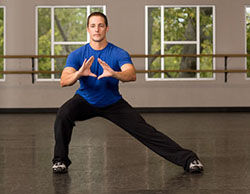 Applying the ACE IFT® Model to High-intensity Exercise Programs
Applying the ACE IFT® Model to High-intensity Exercise Programs
The developers of the Alpha and ETC programs and experienced CrossFit coaches all know that individuals with poor postural control and movement efficiency have an increased risk of injury when they attempt challenging exercises that are above their existing skill level. If personal trainers and group fitness instructors want to create their own high-intensity training programs to help clients achieve results, then an effective strategy is to apply the ACE Integrated Fitness Training® (ACE IFT®) Model of exercise program design. The four phases of the ACE IFT Model do not have to be applied as separate, independent training phases; in fact, the model works best when all four phases are used in the same workout.
The purpose of Stability and Mobility exercises are to strengthen the core and postural muscles responsible for stability, while improving the extensibility of the muscles that allow for joint mobility. Stability and Mobility exercises are an important first step of a dynamic warm-up prior to a high-intensity training session. The Movement phase of the ACE IFT Model combines joint stability and mobility to help clients improve movement efficiency and coordination in the five basic movements of exercise: lunging, squatting (or bending), pushing, pulling and rotation. Body-weight exercises can improve coordination and movement efficiency and serve as a dynamic warm-up before using more challenging exercises in a training session.
The overload to stimulate the hard-to-activate type II muscle fibers can be created by using either heavier resistance during the Load phase of the ACE IFT Model or the explosive muscle actions of power training in the Performance phase. The Load phase is the optimal place to manipulate intensity, repetitions and sets (otherwise known as training volume) to either increase muscle size, known as hypertrophy, or maximize strength output. Load training increases the magnitude of muscle force production, while the Performance phase of training includes a component for the velocity of muscle-force production. High-intensity exercises such as plyometrics, jumping and medicine-ball throws, and explosive weightlifting techniques such as Olympic weightlifting and kettlebells can be classified in the Performance phase because they are based on the application of muscular power.
Here is what a high-intensity WOD would look like using the ACE IFT Model:
Warm-up
These exercises should be completed as two separate circuits; the Stability and Mobility phase circuit should be completed one to two times before progressing to the Movement phase circuit, which should also be completed for one to two complete cycles.
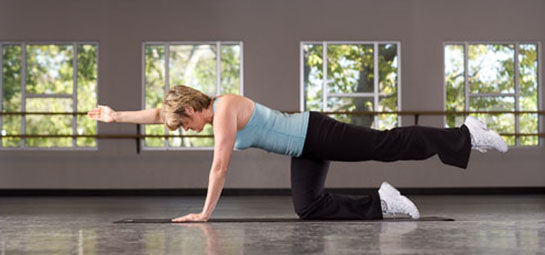
| Warm-up |
|
Exercise
|
Repetitions
|
Rest
|
Sets
|
ACE IFT Phase
|
|
Bird-dog
|
12
|
—
|
1–2
|
Stability & Mobility
|
|
Front plank
|
30-sec. hold
|
2–6
|
30 sec.–3 min.
|
Stability & Mobility
|
|
Side plank
|
20-sec. hold
|
2–6
|
30 sec.–3 min.
|
Stability & Mobility
|
|
Glute bridge
|
12–15
|
2–6
|
30 sec.–3 min.
|
Stability & Mobility
|
Allow for one to two minutes of rest before moving to the movement-based exercise circuit.
Strength-based WOD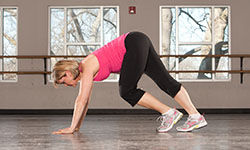
The purpose of this WOD is to improve strength and boost metabolic output (burn calories). The intensity should be 8 RM, meaning that the client should be able to do no more than eight repetitions using that weight. Borrowing from CrossFit, the goal is to perform as many rounds as possible (AMRAP) of the following exercises in seven minutes:
Cool-down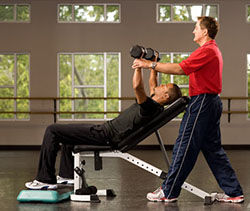
The cool-down should incorporate static stretches and core exercises to help lengthen involved muscles, reduce body temperature and promote recovery.
If you are working with a client for a one-hour session, here is a recommended breakdown for each phase of the workout, which should be based on the client’s existing skill level and fitness goals:
- 15–25 min for a dynamic warm-up
- 8–15 min for high-intensity work
- 10–15 min for recovery, stretching and tissue cool-down
Producing Results for Clients
Here are some tips on how to use high-intensity exercise to minimize the risk of injury and maximize training outcome. There is no single right way to train—all sorts of exercises work, but it is necessary to understand how to monitor intensity and training volume.
- Skill – Teach the exercise movement and make sure a client can execute a movement successfully before adding weight.
- Technique – As soon as a client loses form, the set should be finished. The greatest risk for injury comes from a client trying to rush through a technical lift with poor form.
- Use bodyweight exercises that mimic the movements in the WOD as a means of a dynamic warm-up.
- Ask a client to keep a training journal to record stress/ratings of perceived exertion (RPE) levels (or have a consistent place to write it down on a client’s workout program). Any time a client deviates, the program should be adjusted to be less stressful, and appropriate rest should be taken before re-starting high-intensity training.
It is not necessary to spend additional resources on a certification or instructor training to provide clients with the benefits from high-intensity exercise. ACE-certified Personal Trainers and Group Fitness Instructors can use their existing knowledge to develop challenging workout programs using the ACE IFT Model as a format for progressing from Stability and Mobility to Movement and, ultimately, to Load and Performance training to provide dynamic programs that are both effective and safe for clients.
References
Baechle, T.R. and Earle, R.W. (2008). Essentials of Strength Training and Conditioning (3rd ed.). Champaign, Ill.: Human Kinetics.
CrossFit (2010). Crossfit Training Guide. Santa Cruz, Calif.: CrossFit, Inc.
Linnam, V., et al. (2005). Acute hormonal responses to submaximal and maximal heavy resistance and explosive exercises in men and women. Journal of Strength and Conditioning Research, 19, 3, 566–571.
Meckel, Y. et al. (2011). Hormonal and inflammatory responses to different types of sprint interval training. Journal of Strength and Conditioning Research, 25, 8, 2161–2169.
Schoenfeld, B. (2010). The mechanisms of muscle hypertrophy and their application to resistance training. Journal of Strength and Conditioning Research, 24, 10, 2857–2872.
Smith, M. et al. (2013). Crossfit-based high-intensity power training improves maximal aerobic fitness and body composition. Journal of Strength and Conditioning Research [Epub ahead of print]

 by
by 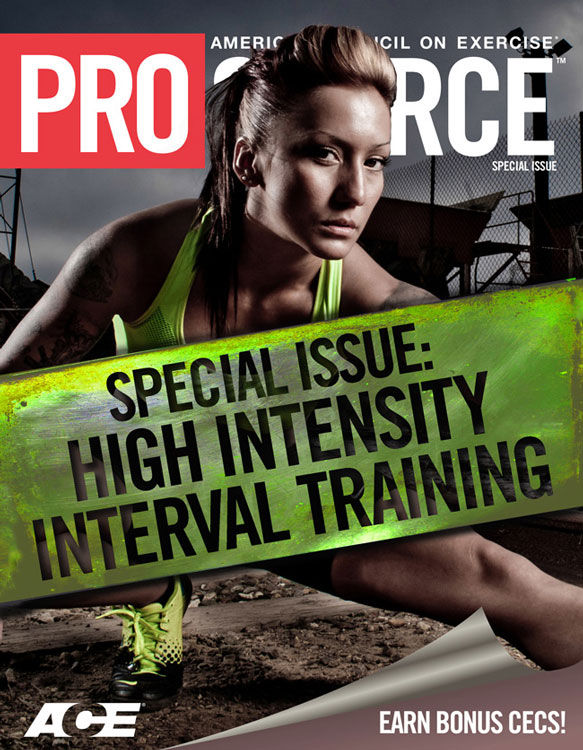



 All exercise is movement, and movement is a skill that must be properly taught by a qualified instructor and correctly executed by a client to be the most effective. High-intensity exercise itself is not dangerous, but using it inappropriately or without the proper guidance is not advised. As CrossFit has developed and expanded over the years, smart studio operators and coaches have made teaching safe exercise technique a critical component of their businesses. For example, CrossFitDC coach Brose requires all new participants to take a two-week, six-session program to learn the foundational movements before being allowed to participate in a WOD. Brose enforces technique and proper progressions for all of his participants and always offers lower-intensity options that allow them to exercise hard but with an emphasis on safety.
All exercise is movement, and movement is a skill that must be properly taught by a qualified instructor and correctly executed by a client to be the most effective. High-intensity exercise itself is not dangerous, but using it inappropriately or without the proper guidance is not advised. As CrossFit has developed and expanded over the years, smart studio operators and coaches have made teaching safe exercise technique a critical component of their businesses. For example, CrossFitDC coach Brose requires all new participants to take a two-week, six-session program to learn the foundational movements before being allowed to participate in a WOD. Brose enforces technique and proper progressions for all of his participants and always offers lower-intensity options that allow them to exercise hard but with an emphasis on safety. Applying the ACE IFT® Model to High-intensity Exercise Programs
Applying the ACE IFT® Model to High-intensity Exercise Programs



